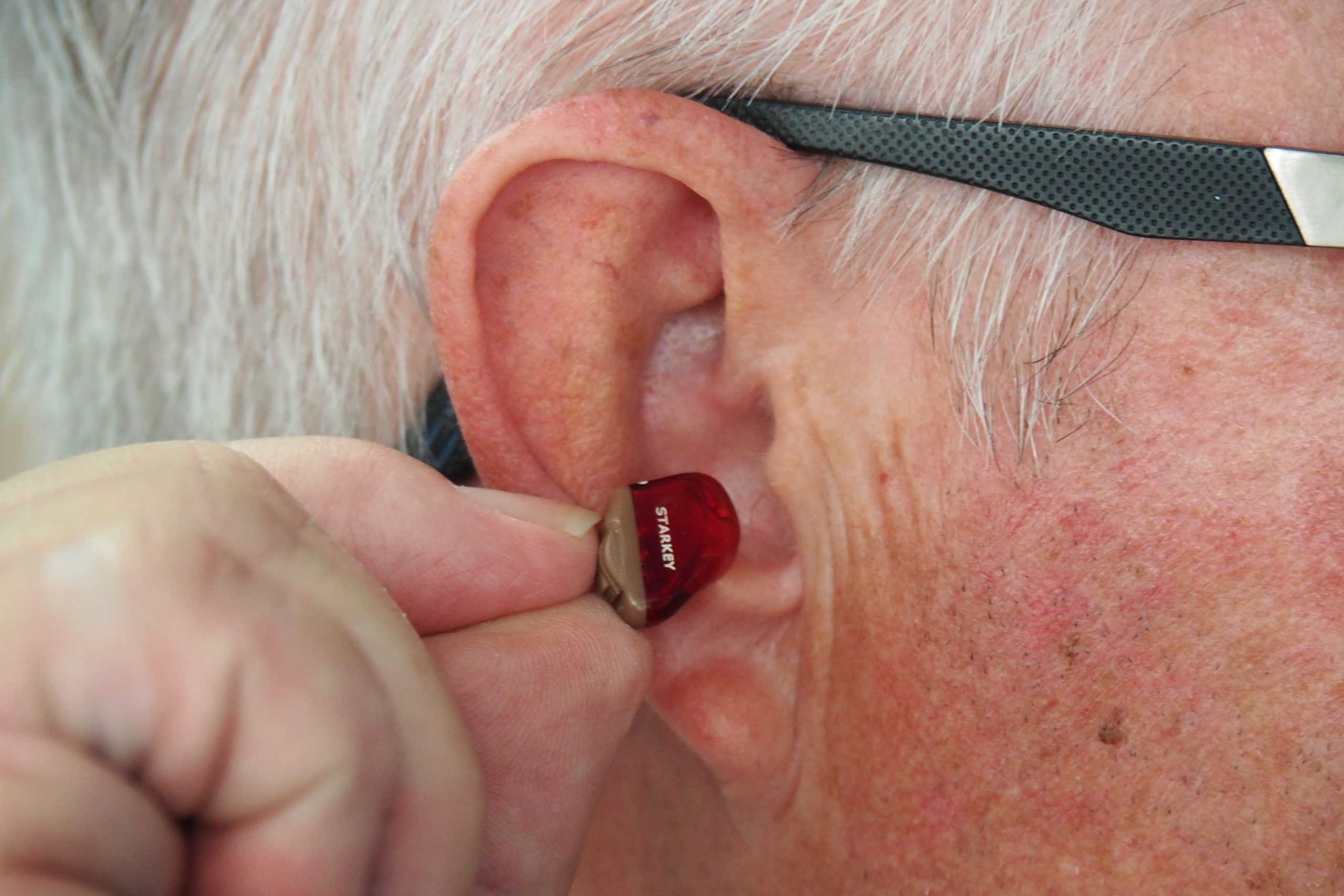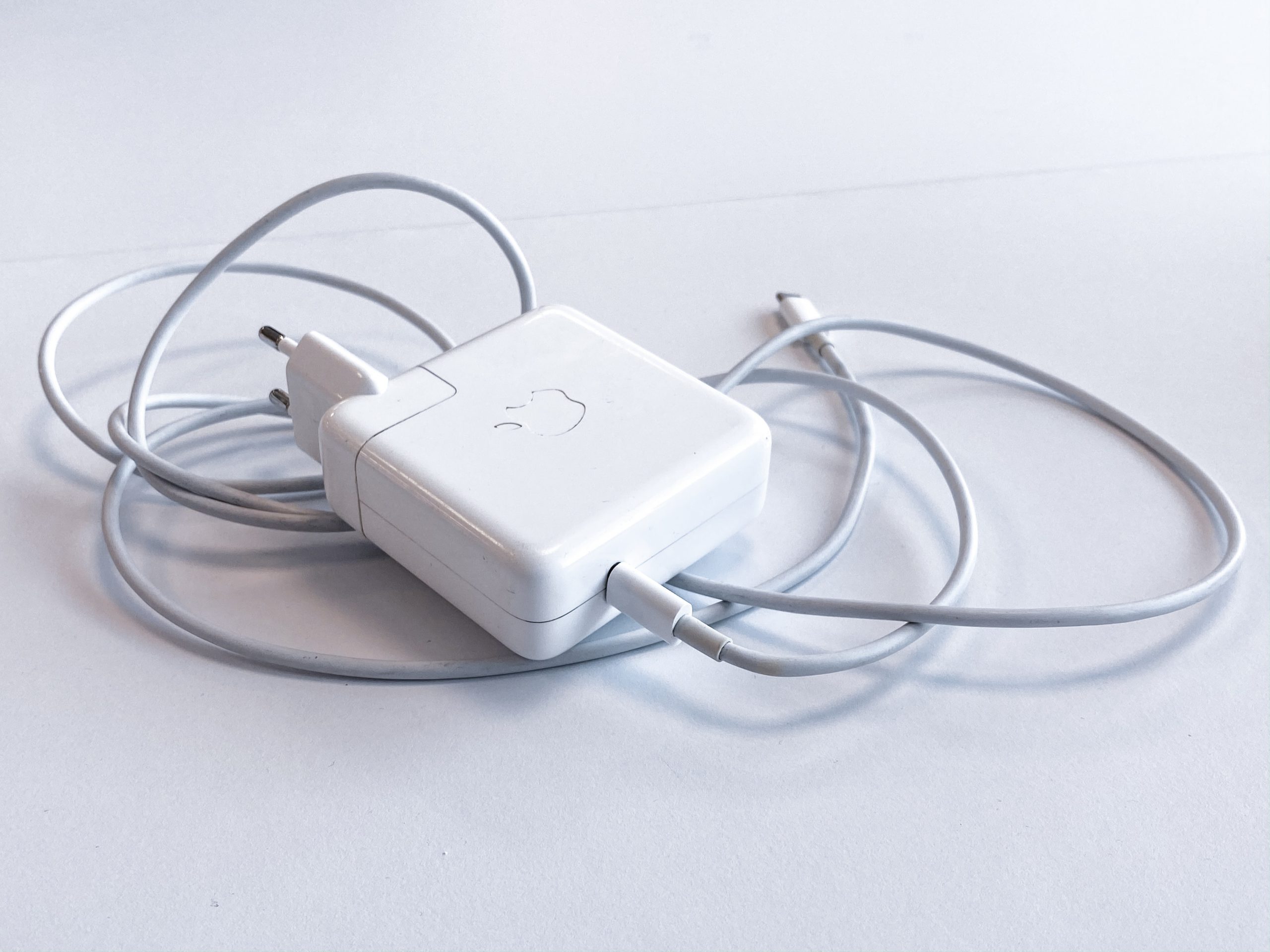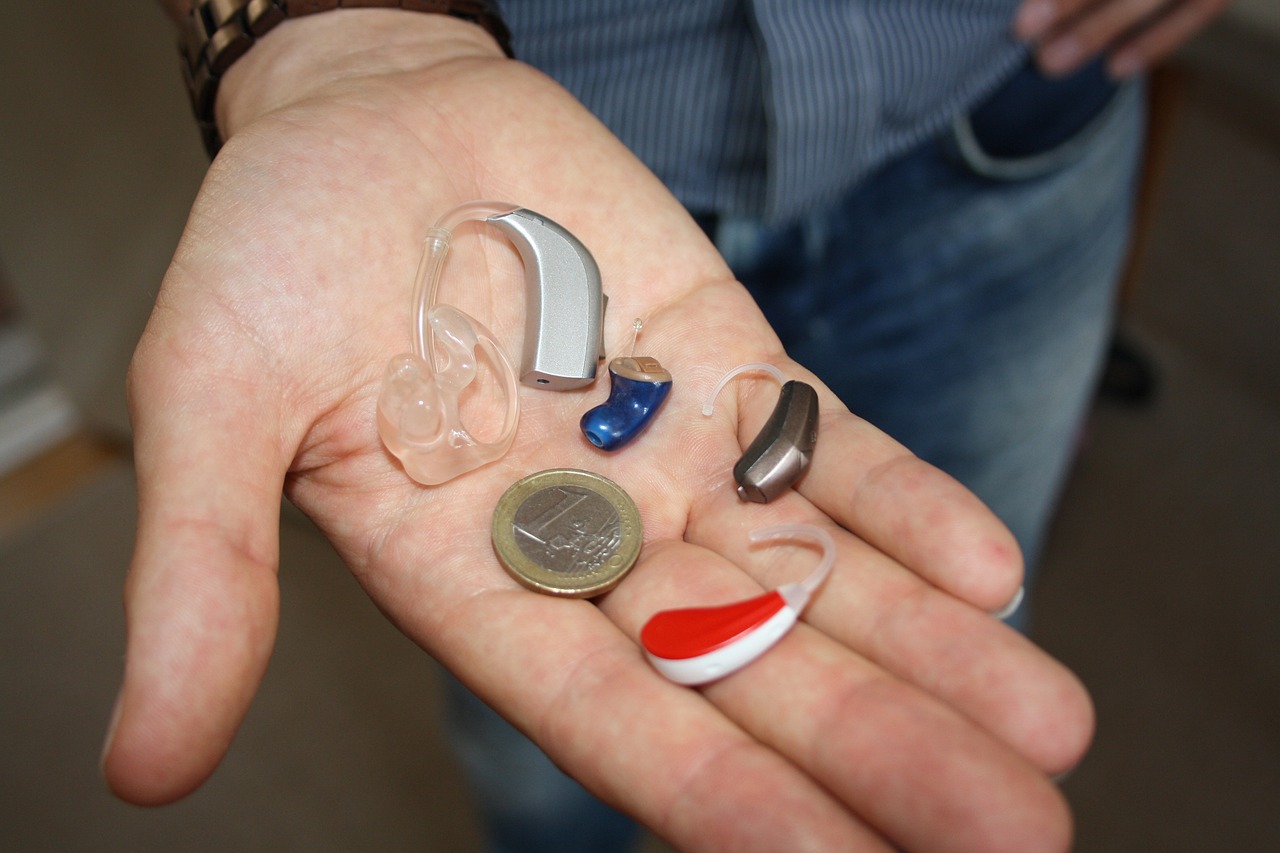
Hearing aids are a great option for those with hearing loss. Not only can these devices help you interact and reconnect with the world and others, but they can also help with issues that can appear further down the line that are commonly associated with untreated hearing loss. No two individuals hearing loss is the same, however, and there are many different types of hearing aids to help each unique condition.
Finding which is the best fit for you is a crucial part of picking your hearing aid – let’s take a quick look at all the options available!
Contents
The Two Main Types of Hearing Aids
Hearing aids can be broken down into two main categories: Behind-The-Ear (BTE) and In-The-Ear (ITE). For a more detailed look, click the title link.
Behind-The-Ear (BTE)
Advantages: Suitable for all types of hearing loss that require a hearing aid, especially more severe/profound hearing loss. The separation between the microphones and receivers means fewer feedback issues, and they’re also not so prone to needing repairs.
Disadvantages: They are the least discreet model with their larger size. If they have ear molds they might need to be remade every two to four years. To preserve the acoustic seal they might need to be retubed. Ear tips and tubes on open fit micro BTEs will need to be changed from time to time, and their size means they can be uncomfortable when using phones for calling.
In-The-Ear (ITE)
Advantages: Twin microphones that deliver much better clarity in an environment that is noisy. While smaller and more discreet than BTE, the still small size of the device might be suitable for more severe hearing loss. Easy to use with a telephone.
Disadvantages: They are more likely to have problems with moisture and ear wax. Daily cleaning is necessary. They need to be repaired more than BTE devices. As the receiver and microphone are closer together than in other styles there might be feedback issues.
The Many Different Styles
Once you’ve narrowed down the type of style you want, there are even more options to consider!
Mini-Behind-the-Ear (Mini BTE)
Advantages: They don’t require a custom earmold and there’s no plugged-up sensation. The ear canal is left open for more natural sound (especially with your own voice).
Disadvantages: They’re slightly more difficult to use with the telephone.
Receiver-In-Canal (RIC)
Advantages: A type of BTE hearing aid, these are the most popular type on the market today. They are ideal for most people requiring a hearing aid. They’re extremely discreet and have good sound quality.
Disadvantages: The earmolds and ear tips will need to be changed somewhat often. The receiver is in the ear canal and they’re more likely to fail than standard BTEs. They can be hard to use with the phone.
In-the-Canal (ITC)
Advantages: A more discreet style of ITE hearing aids. They might have dual mics if your ear size allows enough room.
Disadvantages: With ITC you can also have feedback problems because of the close distance between the receiver and the microphone. Ear wax and moisture can cause damage as these devices sit in the ear canal. Batteries can be hard to change. They are too small for directional mics, and might also need repairs.
Completely-in-Canal (CIC)
Advantages: Very discreet and small, so not obvious to others. They provide good sound quality due to the position in the ear.
Disadvantages: The small size can be hard for some people to handle. Again, feedback can be an issue. These hearing aids are perhaps the most likely to need repairing. Many people also report experiencing occlusion (the feeling of talking into a bucket).
Invisible-in-the-Canal (IIC)
Advantages: The smallest style, they are practically invisible and easy to use with a phone. They have no feedback.
Disadvantage: A level of dexterity is needed to change batteries (which have a short life). The small size also means less power and functions.
Other Things To Consider
Aside from the type of hearing aid, there are a plethora of other functions and decisions you’ll have to make. Do you need Bluetooth? Do you mind changing the batteries, or would you prefer to charge your hearing aid like a phone? Hearing aid for one ear or both?
With so many options and types of hearing aids, you’ll have a lot to consider when picking out a new pair of hearing aids. Make sure to consult with an audiologist – they’ll be able to provide you an expert opinion and recommend the most appropriate style for you.
The information in this guide has been written using the following reliable sources:
https://www.aarp.org, https://www.healthyhearing.com, https://www.clearliving.com








